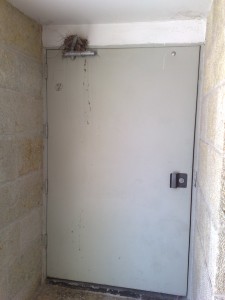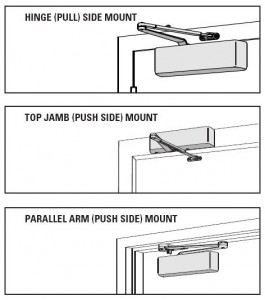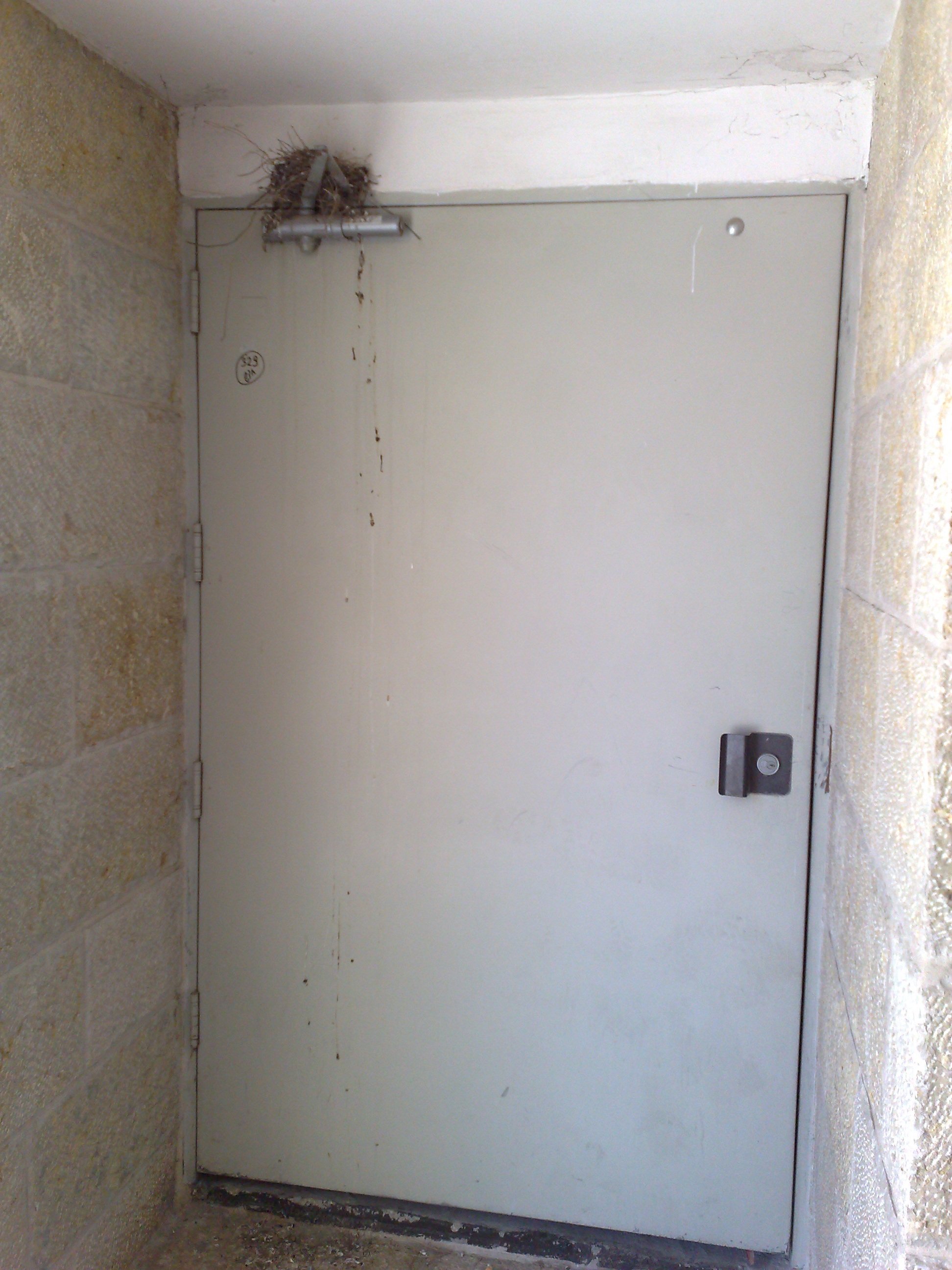 I have a lot of pet peeves – just ask my family. One of my pet peeves is when I see a door closer on the “wrong” side of a door. It could be the corridor side of an electric room, the outside of a bathroom, or, like the photo to the left, the weather side of an exterior door. I just don’t understand how a closer ends up on the wrong side of the door, especially when many of them (the one at left included) come packed with all of the parts and pieces required to install it three different ways.
I have a lot of pet peeves – just ask my family. One of my pet peeves is when I see a door closer on the “wrong” side of a door. It could be the corridor side of an electric room, the outside of a bathroom, or, like the photo to the left, the weather side of an exterior door. I just don’t understand how a closer ends up on the wrong side of the door, especially when many of them (the one at left included) come packed with all of the parts and pieces required to install it three different ways.
 For surface mounted closers, there are 3 basic mounting types – hinge side mount (also called regular arm), top jamb mount, and parallel arm mount. There are also track style closers but for this lesson we’ll stick to the Big 3. The biggest factor in determining which mounting style to use is which side of the door you want the closer on. Occasionally there will be a frame detail or some other conflict that affects the closer location, but not often.
For surface mounted closers, there are 3 basic mounting types – hinge side mount (also called regular arm), top jamb mount, and parallel arm mount. There are also track style closers but for this lesson we’ll stick to the Big 3. The biggest factor in determining which mounting style to use is which side of the door you want the closer on. Occasionally there will be a frame detail or some other conflict that affects the closer location, but not often.
So it’s very simple. Where do you want the closer? If the pull side of the door is the preferred location, you would use a hinge side mount (or regular arm) closer, like the LCN 4011.
For closers mounted on the push side of the door, you would use either top jamb (like the LCN 4021) or parallel arm (like the LCN 4111). The advantage of a top jamb closer is that you can use it on a door with a smaller top rail. You can also use a drop plate to move the closer down slightly on the frame head, to make room for an overhead stop. The disadvantage of the top jamb mount is that the arm is sticking out perpendicular to the door and frame, which makes it more prone to vandalism.
Parallel arm closers mount on the push side of the door, with the closer body on the top rail of the door and the shoe mounted under the frame head. The arm is less exposed and less prone to vandalism. The arm can incorporate a built-in dead stop, or a special template can be used to allow space for an overhead stop. A parallel arm closer does require a larger top rail than a top jamb closer, but if coordinated properly, it’s my preferred mounting style for a push-side closer.
So back to my pet peeve…let the installation pictured on this post be a lesson to you! If this closer was mounted properly, this bird would have found a tree to build its nest in, rather than living in fear that someone’s going to open the door.
Thank you once again to Eyal Bedrik of Entry Systems Ltd. in Israel for sending these photos of a door in Jerusalem.
I’d love to see some good, bad, or ugly photos from wherever YOU are, so send them along!
You need to login or register to bookmark/favorite this content.







Lori, I also have a door closer pet peeve, that is LOOSE ARMS or missing arm screws (touch arm to have it fall off in your hand).
If I installed the LCN in the picture above, I would have placed it on the push side and inside the building, I believe also that a closer exposed to weather like this CAN VOID the (LCN 10 year) warranty, since the warranty seems to only cover workmanship during assembly process at factory, not install mishaps.
Also bird poo can carry diseases, so hopefully the person who has to repair or adjust this closer wears gloves and cleans the closer really well before adjusting.